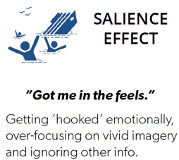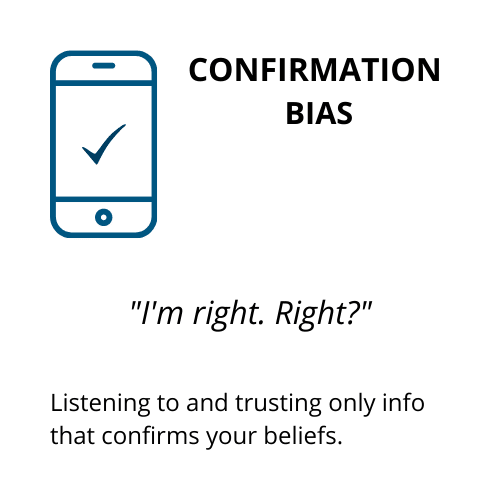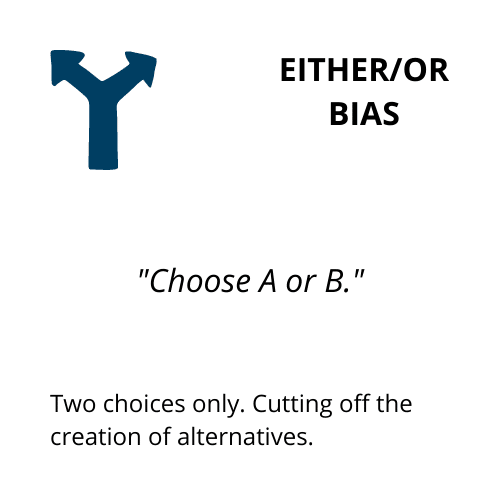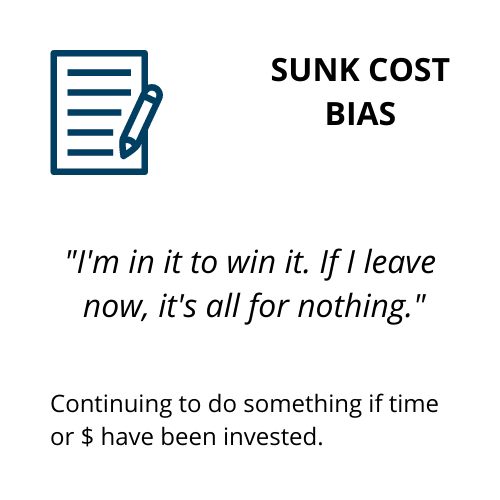Do you remember your life when Covid started? How was it possible that everyone was obsessed with toilet paper? Shelves were emptied, people were frantic, and stores put limits on purchase quantities.
Of course, panic was at play, but why toilet paper? Underneath the dramatic scarcity messaging from 24/7 news stories and social media bombardment, our human brains connected to the drama and vivid imagery of empty store shelves, especially in the personal hygiene section. Our brains were actually being tricked into incorrect catastrophic thinking because of the Salience effect, one of many cognitive biases, so we ran out and stocked up on toilet paper!
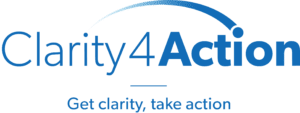
About
Clarity4Action is a non-profit that teaches and coaches decision-making skills to young people, emerging adults, parents, and mentors. Many of the same issues in decision-making show up in both business and personal settings. Amy Day, Clarity4Action’s Executive Director and co-founder, is the guest author for this newsletter.
what is a cognitive bias?
So, what is a cognitive bias? Let’s start with a little brain science grounded in the work of Nobel Prize winner, Daniel Kahneman, and his colleague Amos Tversky. They discovered that our brains contain a systematic sorting system, called heuristics, that create mental shortcuts for processing the continuous onslaught of information we receive moment-by-moment.
Heuristics miraculously allow us to almost instantly categorize, plan, and act on life’s inputs. When these hardwired heuristics are appropriate to a situation, they are great. But they can also activate inappropriately, creating cognitive biases. These biases are simply glitches in this brain system; they show up when we inadvertently sort information incorrectly. Depending on the situation, cognitive biases can have a small or profound impact on our planning, decision thinking, and ultimately on the choices we make. So often we blame ourselves for these glitches, as if it’s our fault, instead of thinking about them as programming bugs that we can intentionally re-code.
We simply don’t know what we don’t know, but with awareness we can make invisible cognitive biases visible and do something about them.
At Clarity4Action, we teach cognitive bias awareness as one ingredient in leveraging our brains and integrating our hearts to improve our decision quality. Great decisions give us more of what we want out of life!
In our work, we encourage learners like you to apply our teaching to your own life to create a more memorable and personally useful experience. Although cognitive biases can negatively influence your decision-making processes, awareness of them shifts you as the decision-maker into a powerful mental state to compensate for them and move forward more effectively.
Although hundreds of biases exist, we teach 19 cognitive biases that commonly impact decision-making. The intent in this article is for you to walk away with a clearer understanding of a few biases and create antidotes for yourself to experiment with on decisions in your workplace or at home.
What’s the Bias?
Source: Clarity4Action’s “What’s the Bias?” game handout. To support your effective recall, it provides an illustrative image—a statement in quotes that one might say to oneself when falling for this bias—and a short bias description.
Confirmation bias
We look for information that agrees with our point of view; we are compelled to belong to a tribe. On teams or in families it can mean we recruit and listen to those who don’t challenge our thinking. Online, social media, and search engines can create an echo chamber that amplifies confirming information, while neglecting opposing views, in what it serves up on our feeds or searches. Potential bias antidotes to consider are divergent thinking, listening to people who offer opposing views, or looking at the problem from different perspectives.
Either/Or bias
This bias puts our solutions into distinct paths to get us what we want. An antidote to trying is to list your objectives (what you want out of the decision), to brainstorm ways you to get there, and then to think about how you could hybridize or mix aspects of the different options to get more of what you want. You might also examine what alternatives other people have used. Either/Or bias is also known as Black or White thinking.
Sunk Cost bias
When we invest time, money, or other resources, this trap can tie us to the decision we made in the past, anchoring us to overvaluing that past choice. We can also think that if we abandon the previous decision, it means it was a waste of time or a ‘bad decision.’ At the time, it could have been an excellent choice and a new decision today might improve the situation because of changed circumstances. To compensate, play with ideas and get creative about “What decision would I make if this were a new choice today?” and/or evaluate what has changed. This exercise can get creative juices flowing and open new possibilities.
Although society’s messaging can impress upon us a difference between work and home life, the human brain and experience are a constant. As a whole person, you might start to see how these biases show up everywhere. You are the decision-maker. By making invisible cognitive biases visible, you can step in powerfully with your personal bias antidotes.
Discover what might be going on behind the scenes in your brain
Join one of Clarity4Action’s 90-minute “What’s the Bias?” games free-of-charge! You can just play or invite your family to play with you! Schedule your Zoom session today to reserve your spot.
You’ll
If you have any questions or comments, please reach out to Amy by email.



